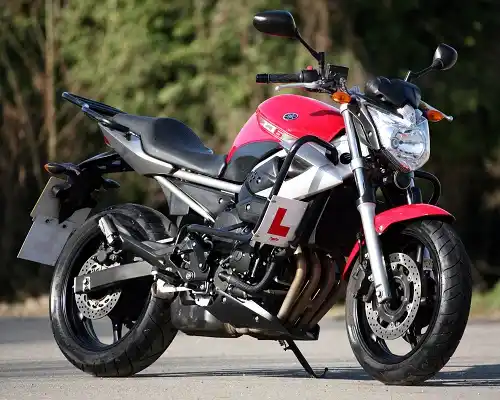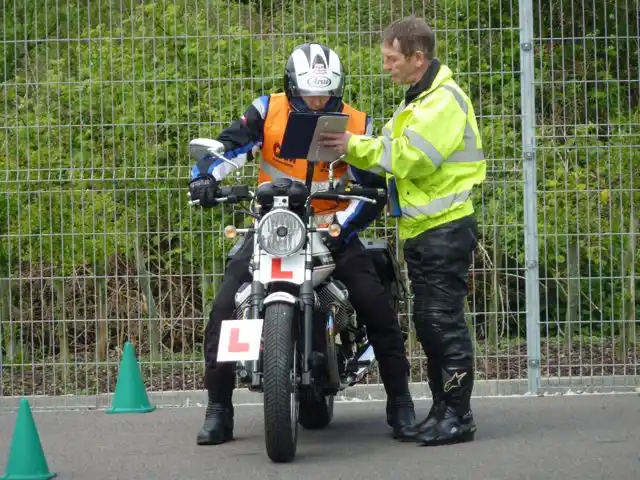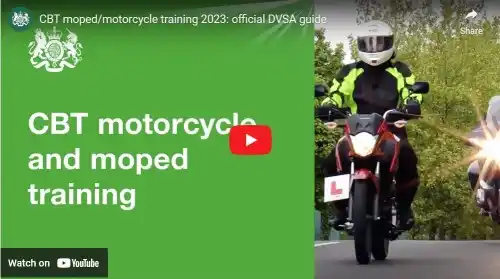Book a motorcycle CBT test in Newcastle, County Down with any of the companies listed here
Click on any of the motorcycle training schools below to view more information and check availability.
TNT Rider Newton Stewart
New Galloway Road, Newton Stewart, Dumfries and Galloway, DG8 6AW
Approx. distance: 76.7 miles
Anglesey Motorcycle Training
Isle of Anglesey, LL62 5HH
Approx. distance: 94.1 miles
Cumbria Motorcycle Training Workington
Moorclose Community Centre, Needham Drive, Workington, Cumbria, CA14 3SE
Approx. distance: 98.6 miles
Fastrak Motorcycle Training Ayr
18 North Harbour Street, Ayr, South Ayrshire Council, KA8 8AA
Approx. distance: 100.1 miles
Pegasus Bike Training Ayr
Bookers Cash & Carry Park, Ayr, Strathclyde, KA8 9DJ
Approx. distance: 101.6 miles
Real Rider Motorcycle Training Barrow in Furness
Vickerstown Foolball Club, Mill Lane, Barrow in Furness, LA14 3NN
Approx. distance: 107.1 miles
C B Motorcycle Training Rhyl
98 Cefndy Road, Rhyl, Denbighshire, LL18 2HB
Approx. distance: 116.9 miles
Flintshire Bike School Rhyl
Rhyl Football Club, Rhyl, Denbighshire, LL18 4BY
Approx. distance: 116.9 miles
Raceways Rider Training Lancashire
48-60 Dock Street, Fleetwood, Lancashire, FY7 6AG
Approx. distance: 119.2 miles
Harleys Rider Training Glasgow
2 Glenburn Road, East Kilbride, Strathclyde, G74 5BA
Approx. distance: 126.5 miles

Locate a motorcycle CBT test in Newcastle, County Down
Have you been searching for a company that can help you complete a motorcycle CBT test in Newcastle or nearby in Castlewellan, Downpatrick and Kilkeel? BookCBTNow is the website you need. We can help you find your local motorbike training centres and help you get out on the road safely.Completing your 'Compulsory Basic Training' CBT test will allow you to ride any scooter, moped, electric motorbike, 50cc moped or 125cc motorbike of your choice. All you'll need to do is get a provisional UK license, suitable clothing and then book your CBT.
What length of time is a CBT test?
A CBT test can normally be completed in a day, but may take longer if you need more time to master the control of the motorcycle or moped. Knowing how to ride a bicycle will really help, so if you have not ridden one for a while it's a good thing to do before you take your CBT.
Read up on your Highway Code! Make sure you have read the Highway Code thoroughly. You can buy a copy of the Highway code at most bookshops or browse it online using this online link.

If I a motorcycle CBT test in Newcastle what would I be doing?
A CBT test consists of 5 elements labelled A to E. You will do these 5 elements in order throughout the day.
The DVSA have produced an excellent short video showing you the elements of a CBT. Here is the video and below it is the description of each of the elements.

Element A comprises of talk about clothing, safety helmet and equipment. This is also when your licence and eyesight will be checked and the aims of the course outlined. Make sure to bring your glasses or contact lenses if you wear them as you will need to read a registration plate at a distance of 20 metres. You will also learn:
- Understanding the legal requirement to riding
- Reinforcing your understanding of the Highway Code to a good level
- Objectives of completing the CBT test
- Understanding the importance of using good motorcycle equipment and clothing
Element B introduces you to the machine and its controls and includes:
- Using the motorcycle stands to safely park your bike
- Familiarity with the different motorcycle or scooter controls
- Wheel the bike round to the left and right
- Starting and stopping the engine
- Carrying out basic maintenance checks
Element C is the main part of the course and takes place on an approved training site (CBT pad). This is when you will learn to:
- Pull away, stop, start and change gears (where applicable)
- Ride in a straight line
- Ride in a slow and controlled manner
- Change gears
- Use both brakes
- Ride a figure of eight
- Carry out left, right and U-turns
- Carry out emergency braking
- Ride round bends safely
- Carry out rear observation
Element D is a return to the class room prior to going out on the road. You will get a full briefing explaining:
- The use of speed, road positioning, safe driving distances
- The importance of the Highway Code
- Your visibility on the road
- Using rear observation
- Riding at the correct speeds, road positioning and distance between other vehicles according to traffic and road conditions.
- Learning to anticipate danger and riding defensively
- Care will also be given in explaining about the radios and how not to get lost on the road
Element E is where you put all the above into practise by riding on the road. You will go out on the road with an instructor two at a time with a radio link. You must do at least two hours of road tuition, which must include doing a U-turn and emergency stop. At the outset the instructor will give plenty of guidance and help, but towards the end of the time on the road the instructor will be looking to see if you can get safely from one place to another without hurting yourself or anybody else.
When were CBTs introduced?
CBT tests were introduced at the tail-end of 1990 and stands for Compulsory Basic Training. The thinking behind them was to try and reduce the number of motorcycle and moped accidents. Not only this, but it helps in giving people of all different ages a better basic understanding relating how to best control a two-wheeled machine.